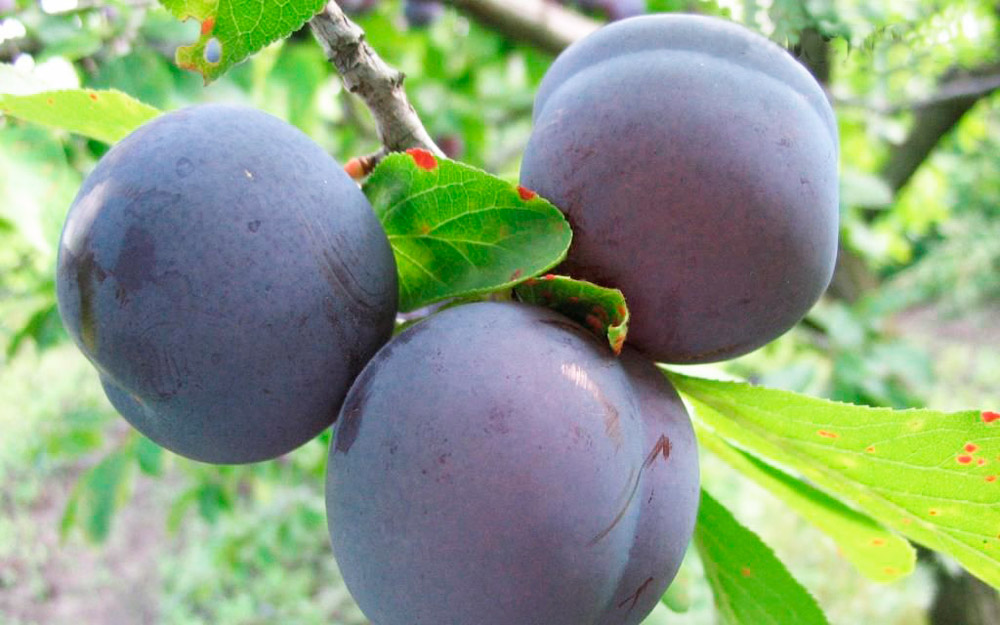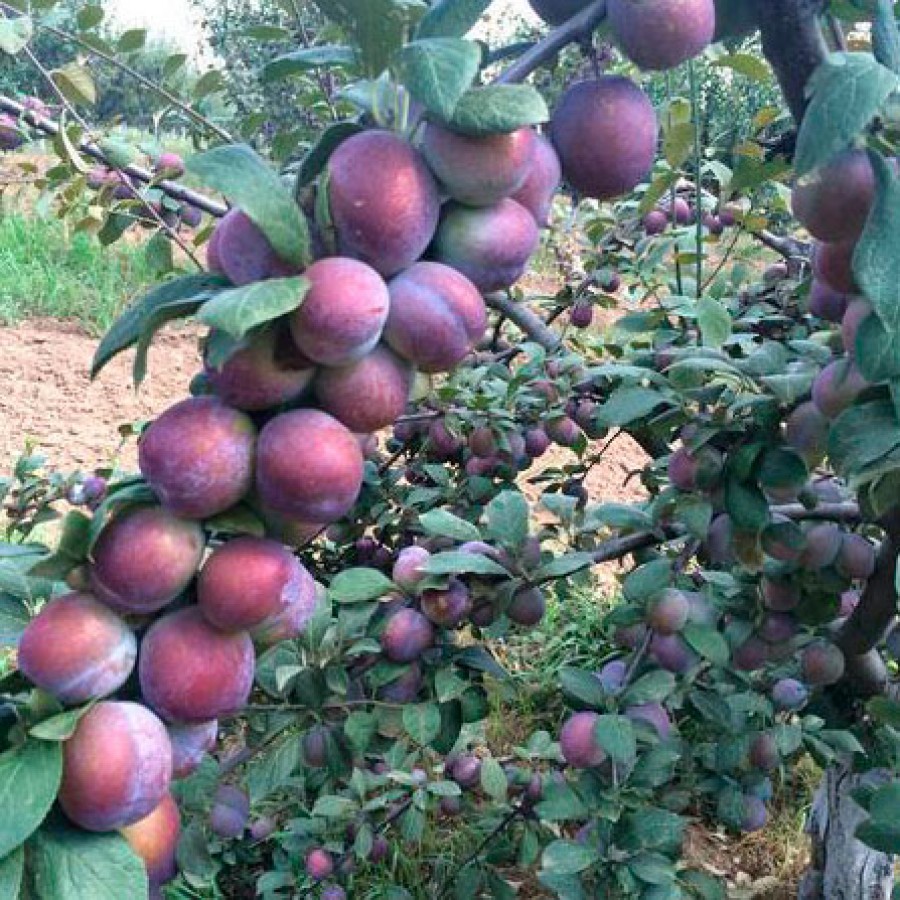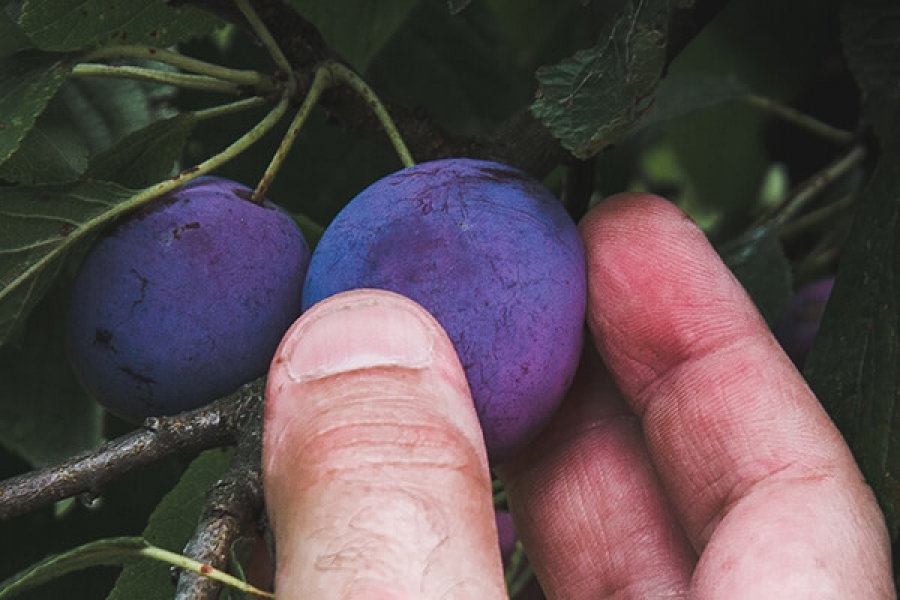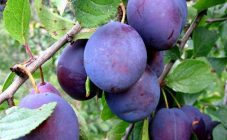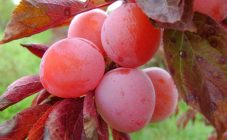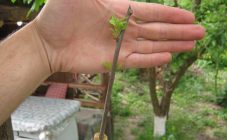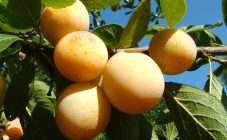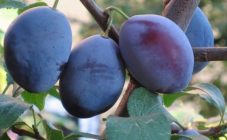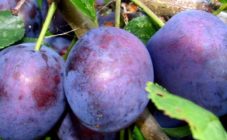Content:
Plum has no wild analogues. This fruit appeared in the Caucasus with natural hybridization of blackthorn and cherry plum. After that, the tree spread to almost the entire planet. Today there are a large number of different species of this plant, but breeders are getting new hybrids with improved properties.
History of creation
Plum Zarechnaya early obtained as a result of the work of a team of scientists under the leadership of G. A. Korsakov. The variety was bred in the All-Russian Research Institute of Breeding and Genetics of Fruit Crops named after V.I. I. V. Michurin. The hybrid was tested according to the standard method, and then included in the State List of Fruit Crops of the Central Black Earth Region. This happened in 1988. On the basis of this tree, another variety was obtained - Zarechenskaya yellow plum, which differs from the original culture in color and weight of fruits.
Description of Zarechnaya plum early
The hybrid has an average height (up to 4 m), early ripening. The buds are slightly pointed at the ends. They are weakly pressed to the branches. On a dense crown, similar in shape to a slightly flattened ball, you can see small lentils painted in gray.
There are relatively few leaves on the tree. They are of medium size and deep green color. Their plate looks like an oval, pointed at one end. Its surface is flat, with a smooth matte skin.
The tree has strong and thick petioles on which buds and leaves are formed. Each has 1-2 pieces of iron. They are small in size. Painted in red tones. The flowers have white petals. During development, they come into contact with each other. The stamens are much shorter than the pistils. During the period of bud formation, these elements are colored green.
In a flower, the calyx has a bell-like shape. After planting, the tree begins to bear fruit for 3 or 4 years.
Characteristics of the fruit of the tree:
- Plums are large in size, painted in dark shades of lilac. The weight of the fruit ranges from 40 to 50 g. It is covered with a beautiful waxy coating, which improves the appearance of the fruit.
- The plum has an oval-round shape. On its surface, the abdominal suture and subcutaneous inclusions are clearly visible.
- The fruit has a pleasant, slightly sour taste. The dense flesh is yellowish in color. The pulp is quite tender and juicy. When tasting table and technical plums, experts gave him an assessment of 4.5 points.
The yield of the Zarechenskaya early plum tree reaches 10-15 kg. The fruits begin to appear in the last days of June. The hybrid has high frost resistance. This is not a self-fertile species, therefore, for the normal fertilization of trees planted in the garden, it is required to plant other varieties of this fruit nearby. For Zarechnaya early plum, the best pollinator is the Etude hybrid, although the planting of the Tambovskaya Krasavitsa variety showed good results. And for the development of full-fledged ovaries, cherry plum is bred nearby.
The early Zarechenskaya plum is used for culinary delights and for canning for the winter.
Description of the plum variety Zarechenskaya yellow:
- the height of the tree reaches 3 m;
- the plant has an average ripening period;
- bears fruit for 3 years after planting;
- fruits are roundish colored yellow with a light waxy coating;
- fruit weight ranges from 20 to 30 g.
This hybrid is used fresh, homemade preparations for the winter are made from it. The yield of the Zarechenskaya yellow plum reaches up to 12 kg per tree. These fruits can be transported over long distances due to the high resistance of the skins, which prevents the fruits from flattening under the influence of mechanical stress.
Growing and caring for trees
For planting plants, choose spacious, sunny places located on the slopes of the hills. It is recommended to select a light loamy or sandy loam soil with neutral acidity. You can not plant a hybrid on the ground where a clay or sand cushion passes in the lower layers of the earth.
The area chosen for planting should not be blown by the wind. Therefore, trees are planted next to the fence or behind the wall of outbuildings.
When buying, seedlings are selected with a length of at least 70-80 cm. They must have developed skeletal branches. The bark on each specimen should not have cracks and signs of decay. It is better to choose plums with a packed root system. They are produced by most of the well-known companies that guarantee high quality hybrids. Pick up trees with roots having a length of at least 15-20 cm.
The sprouts should not be dry. If after purchase any specimen has dried out a little, you can bring it back to life by immersing it in a bucket of water for 24 hours.
For planting seedlings in the garden, the best time is spring or autumn. Pits for sprouts are made 15-20 days before the selected planting time. Organic fertilizers (manure, compost) are poured into them, which are mixed with peat, river sand and turf. The diameter of the hole should be 0.6-0.7 m, and the depth should be about 60-80 cm. A stake is driven into the middle of the hole. The seedling is set 15 cm away from it. They fill the hole with earth, make a circular groove with a shaft around the tree (height 40-50 cm). Warm, settled water is poured there (volume 2 or 3 buckets).
The distance between the planted specimens should be at least 4 m, and 4.5 m are left between the rows.
If the work is carried out in the fall, then 2 weeks after the plum hybrids are installed in place, they are again watered with the specified amount of water (2-3 buckets). When planting in spring, irrigation of trees can be omitted.
Pruning is recommended in fall or spring. Remove all unwanted shoots, dry or diseased branches. In this case, the distance between fruits must be at least 70 mm. You will have to do crown thinning all year round. This will allow you to get stable yields. It is better to remove large shoots than several small branches.
The length of the barrel and stem is reduced by 1/3 each time. These operations are performed 2-3 times a month. It is necessary to provide supports for branches with fruits. If this is not done, then they can break off under the weight of the fruit.
It is not recommended to feed seedlings in the first year of planting. Fertilizers begin to be introduced after 24 months from this period:
- in May, a solution is introduced - 2 tbsp. l. urea diluted in a bucket of water;
- in June, trees are fed with a mixture of 3 tbsp. l. nitrophosphate for 10 liters of liquid;
- in August, plants are fertilized with superphosphate (2 tablespoons of substance per 8 liters of water).
Water the plum tree every 7-12 days. To do this, use warm, sun-dried water. For each plant, 20-30 liters of liquid is enough. Although the plum of this variety belongs to an unpretentious species, in extreme heat it is necessary to double irrigation.
To prevent diseases, the gardener should inspect the hybrids once a month. It is advisable to remove and burn fallen leaves. It is recommended to weed out all weeds in the near-trunk ditch. To eliminate the possibility of developing the disease, trees are sprayed in early spring with a 3% solution of Bordeaux liquid.
If the plant is sick with scab, rust, bushiness, moniliosis, it is necessary to treat the crops with special means that destroy fungi and bacteria. To choose one or another medicine, it is better to seek help from an experienced farmer or specialist.
To get rid of garden pests, the following work is carried out:
- remove all dry twigs and yellow leaves;
- in the fall, they dig up the trunk circle;
- plum trunks are whitewashed with lime;
- in early spring trees are sprayed with special preparations.
To combat various insects, "Inta-Vir" and similar products are suitable. They destroy not only the parasites themselves, but also their eggs or caterpillars.
Advantages and disadvantages of the variety
The advantages of the Zarechnaya early plum hybrid are:
- the presence of large fruits;
- even distribution of fruits on the tree;
- ease of separation of the bone from the pulp;
- good winter hardiness;
- resistance to diseases and pests;
- unpretentious care;
- excellent transportability.
The disadvantages of the plum hybrid are as follows:
- the plant does not withstand the smallest shading - its fruits begin to shrink;
- it is necessary to plant this variety in those places where the wind does not penetrate;
- it is recommended to plant the tree only in those areas that are indicated in the register.
To get a harvest of plums, you need to accurately follow all the instructions of specialists. Hybrid care must be systematic, otherwise you can lose most of the crop. To prevent the crown from becoming thick and letting in sunlight, it is recommended to thin it out every year, otherwise the weight of the fruit will decrease. Any farmer, with proper planning of agricultural activities, will receive the desired return from the planted plum hybrids.
